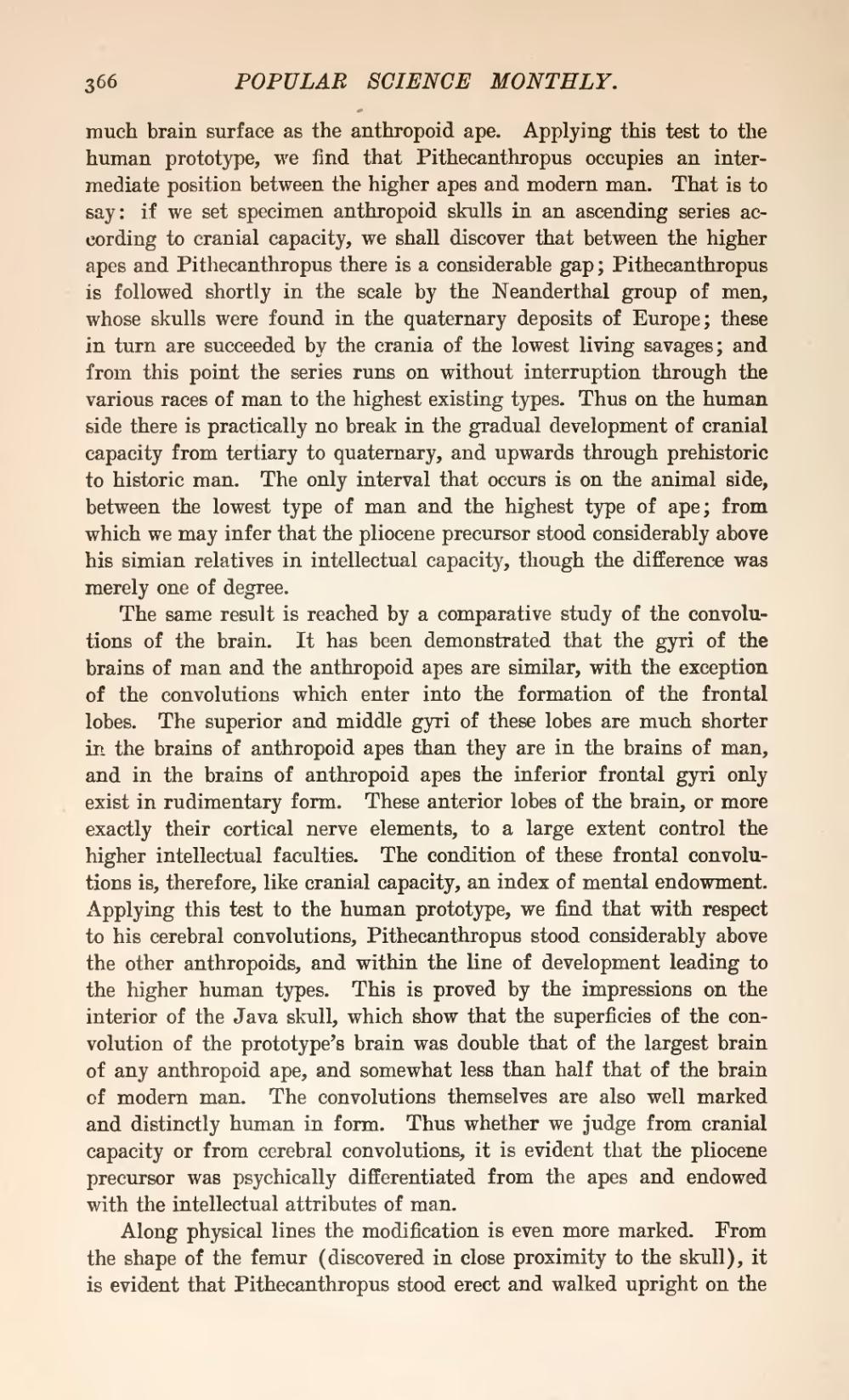much brain surface as the anthropoid ape. Applying this test to the human prototype, we find that Pithecanthropus occupies an intermediate position between the higher apes and modern man. That is to say: if we set specimen anthropoid skulls in an ascending series according to cranial capacity, we shall discover that between the higher apes and Pithecanthropus there is a considerable gap; Pithecanthropus is followed shortly in the scale by the Neanderthal group of men, whose skulls were found in the quaternary deposits of Europe; these in turn are succeeded by the crania of the lowest living savages; and from this point the series runs on without interruption through the various races of man to the highest existing types. Thus on the human side there is practically no break in the gradual development of cranial capacity from tertiary to quaternary, and upwards through prehistoric to historic man. The only interval that occurs is on the animal side, between the lowest type of man and the highest type of ape; from which we may infer that the pliocene precursor stood considerably above his simian relatives in intellectual capacity, though the difference was merely one of degree.
The same result is reached by a comparative study of the convolutions of the brain. It has been demonstrated that the gyri of the brains of man and the anthropoid apes are similar, with the exception of the convolutions which enter into the formation of the frontal lobes. The superior and middle gyri of these lobes are much shorter in the brains of anthropoid apes than they are in the brains of man, and in the brains of anthropoid apes the inferior frontal gyri only exist in rudimentary form. These anterior lobes of the brain, or more exactly their cortical nerve elements, to a large extent control the higher intellectual faculties. The condition of these frontal convolutions is, therefore, like cranial capacity, an index of mental endowment. Applying this test to the human prototype, we find that with respect to his cerebral convolutions. Pithecanthropus stood considerably above the other anthropoids, and within the line of development leading to the higher human types. This is proved by the impressions on the interior of the Java skull, which show that the superficies of the convolution of the prototype's brain was double that of the largest brain of any anthropoid ape, and somewhat less than half that of the brain of modern man. The convolutions themselves are also well marked and distinctly human in form. Thus whether we judge from cranial capacity or from cerebral convolutions, it is evident that the pliocene precursor was psychically differentiated from the apes and endowed with the intellectual attributes of man.
Along physical lines the modification is even more marked. From the shape of the femur (discovered in close proximity to the skull), it is evident that Pithecanthropus stood erect and walked upright on the
